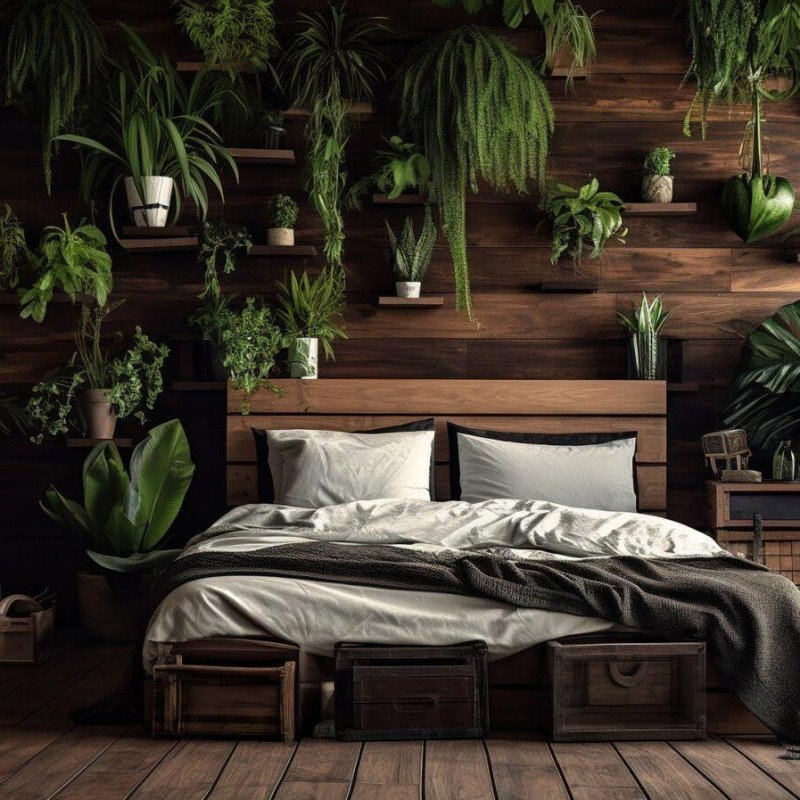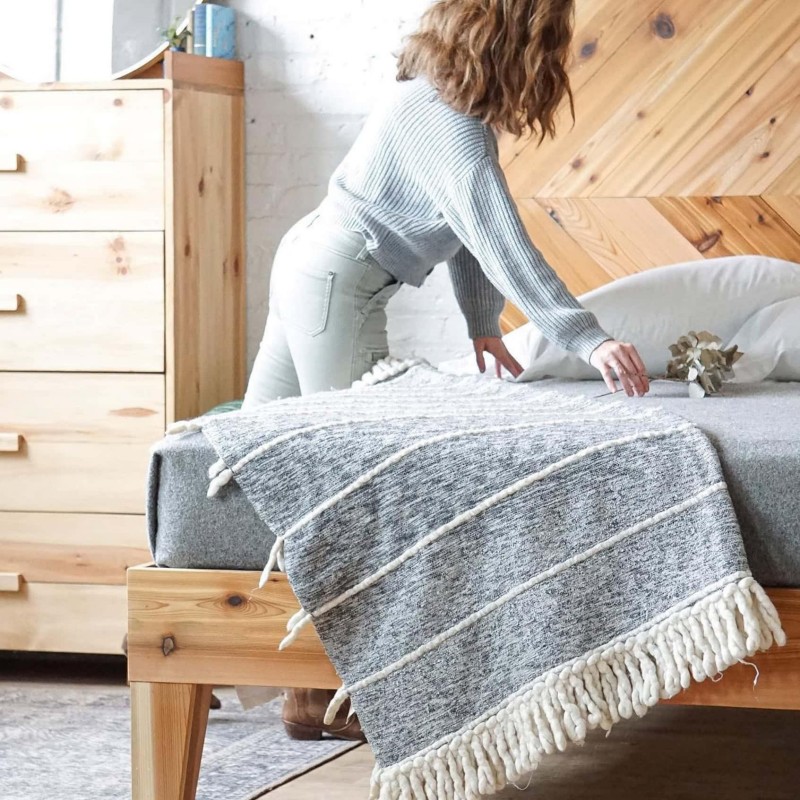In the world of interior design and home organization, custom made wardrobes for rooms stand out as a smart solution for maximizing space while adding personal style. Gone are the days when standard, off-the-shelf furniture was the only option. Today’s homeowners are increasingly opting for tailored storage solutions that seamlessly fit their specific needs, preferences, and room layouts. A custom wardrobe transforms not only how you store your belongings but also how you utilize your space. Whether your room is sprawling and spacious or compact and cozy, a custom wardrobe can be designed to optimize every inch, incorporating clever storage solutions that reflect your lifestyle. In this comprehensive guide, we will explore the various types of custom made wardrobes, the benefits they offer, considerations before making a choice, styles to consider, tips for effective organization, and maintenance insights to keep your wardrobe looking pristine.
Understanding Custom Made Wardrobes
To appreciate the value of custom made wardrobes for rooms, one must first understand what they entail and why they are increasingly popular.
Definition of Custom Made Wardrobes
Custom made wardrobes are bespoke storage solutions tailored specifically to the room they inhabit.
- Tailored Designs: Unlike standard wardrobes that come in predetermined sizes and styles, custom wardrobes are crafted to meet the specific dimensions, design elements, and organizational needs of the homeowner. They offer flexibility in both function and aesthetics.
- Material Options: Homeowners can choose from a variety of materials, including wood, laminate, metal, and glass, allowing for a finished product that complements the existing decor while also ensuring durability and functionality.
Benefits of Custom Made Wardrobes
Investing in custom made wardrobes for rooms comes with numerous advantages that go beyond mere aesthetics.
- Optimized Space: Custom wardrobes can be designed to fit awkward corners or sloped ceilings, maximizing the available space in the room and minimizing wasted areas.
- Personalized Storage Solutions: With the ability to dictate the layout and shelving options, homeowners can create a functional wardrobe that caters to their specific storage needs, whether it’s for clothing, accessories, or other items.
- Enhanced Aesthetics: A custom wardrobe can enhance the overall decor of a room. It allows homeowners to choose finishes, colors, and styles that integrate seamlessly with their home’s design scheme, making the wardrobe a standout feature.
Types of Custom Made Wardrobes
There is no one-size-fits-all when it comes to wardrobes. Recognizing different types of custom wardrobes can help you identify what suits your needs.
Walk-In Wardrobes
Walk-in wardrobes are often considered the epitome of luxury and functionality.
- Spacious Design: A walk-in wardrobe allows you to step inside an expansive area dedicated to storing clothing and accessories, often featuring a center island for added function.
- Organizational Features: These wardrobes can include shelves, hanging rods, shoe racks, and drawers that facilitate a tailored organization system.
Reach-In Wardrobes
For smaller rooms, reach-in wardrobes maximize space without overwhelming the area.
- Space Efficiency: Designed to fit in alcoves or tight spaces, reach-in wardrobes often feature sliding doors or bifold doors to minimize the footprint.
- Custom Configurations: Homeowners can choose from various internal configurations, including shelves and hanging options, to ensure optimal use of available space.
Corner Wardrobes
Corner wardrobes are useful in rooms with limited wall space.
- Unique Dimensions: Designed to fit snugly into corners, these wardrobes are an efficient solution for utilizing often-neglected areas of a room.
- Stylish Appearance: Corner wardrobes can add architectural interest to a room and are available in a variety of styles and finishes that suit the decor.

Modular Wardrobes
Modular wardrobes offer flexibility, allowing homeowners to adapt their storage solutions as needs change.
- Interchangeable Components: These wardrobes consist of separate units that can be mixed and matched or added to over time. This adaptability makes them a popular choice for evolving storage needs.
- Tailored Designs: Homeowners can customize the layout to include different elements such as hanging, shelving, or drawer components to suit their specific organization style.
Considerations Before Choosing a Custom Made Wardrobe
Choosing a custom made wardrobe is a significant decision that involves several considerations to ensure that the final product meets your expectations.
Assessing Your Space
Before embarking on your custom wardrobe journey, consider the constraints and opportunities of your room.
- Room Dimensions: Take accurate measurements of the space where the wardrobe will be placed. Ensure to account for door swings, windows, and other architectural features that may impact the design.
- Ceiling Height: High ceilings provide an opportunity for extended storage, but it’s important to consider access points, especially if shelving is high up.
Defining Your Needs
Analyzing your storage requirements helps direct the design of your wardrobe.
- Type of Items: Make a list of what you expect to store in your wardrobe. Consider items such as clothing, shoes, hats, or accessories, and determine how much space is needed for each category.
- Organization Preferences: Identify your desired organization method. For example, if you prefer hanging clothes, ensure that the design incorporates ample hanging space instead of excessive shelving.
Style and Aesthetics
The wardrobe should reflect your personal style and complement the room’s decor.
- Design Preferences: Consider how the wardrobe design aligns with the overall theme of the room. Do you favor modern minimalism, classic elegance, or rustic charm? This stylistic alignment enhances the wardrobe’s integration into the existing space.
- Finish Choices: The choice of finishes—including colors, textures, and materials—can significantly affect the overall look. Decide whether you want a bold statement piece or a more subdued wardrobe that seamlessly blends into the background.
Designing Your Custom Made Wardrobe
Once you have a clear understanding of your needs and aesthetic preferences, it’s time to move on to the design process.
Working with a Professional
Partnering with a designer or a wardrobe specialist can make the planning and design process more efficient.
- Consultation Process: Most professionals begin with a consultation, during which you’ll discuss your vision, needs, and preferences. They may offer suggestions and insights based on their expertise to help refine your ideas.
- Custom Design Plans: Once your requirements and tastes are established, a professional can create a design plan that includes sketches or renderings, allowing you to visualize the final product.
DIY Design Considerations
If you appreciate a hands-on approach, consider designing the wardrobe independently with careful planning.
- Design Software: Utilize online design tools or software that allow you to create your design virtually. This hands-on method provides a clearer understanding of spacing and layout.
- Sketching Ideas: If you prefer traditional methods, sketch out your ideas, focusing on dimensions, layout, and functional elements. This approach provides a visual reference when discussing ideas with professionals or fabricators.
Practical Features to Incorporate
To best utilize space and ensure the wardrobe meets your needs, consider incorporating various practical features.
Shelf Styling and Height Variations
Organizing shelf height and layout maximizes storage potential.
- Adjustable Shelves: Choose adjustable shelving options, allowing you to change shelves as storage needs evolve, accommodating both short and tall items.
- Open Shelving versus Closed: Consider whether you want a mix of open shelving for easy access to frequently used items and closed shelves for seasonal or less-used items.
Hanging Storage Options
Maximize hanging space through thoughtful planning.
- Double Hanging Rods: Incorporating double rods for shorter items, such as shirts and blouses, saves space and allows for a more organized display.
- Specialized Hangers: Include hooks or specialized hangers for accessories, ties, or belts to keep everything neatly arranged and easy to find.
Drawer Systems and Accessories
Adding drawers can significantly boost the wardrobe’s functionality.
- Dovetail Joinery: Opt for quality drawer construction using dovetail joinery, ensuring durability and ease of use.
- Drawer Dividers: Incorporate dividers to keep smaller items organized, which helps maintain a tidy and efficient system for socks, undergarments, or accessories.
Organizing Your Custom Made Wardrobe
The design phase is just the beginning; organizing the interior space is crucial for creating a user-friendly wardrobe.
Decluttering and Inventory
Before committing to organizing, take the time to declutter and assess what you truly need.
- Sort Items: Go through clothing and accessories, determining what to keep, donate, or discard. This process will simplify your organizing efforts and ensure you only store items that you plan to use.
- Maintain an Inventory: Consider maintaining an inventory of your wardrobe contents to help realize what you own and what may need attention, such as repairs or replacement.
Effective Organization Strategies
Once decluttered, implement these effective organization strategies to enhance usability.
- Seasonal Rotation: Rotate your clothing by seasons, keeping only current season items easily accessible. Store out-of-season clothing out of sight to maximize space.
- Categorize: Group similar items together, such as shirts, pants, and jackets. This method simplifies finding specific pieces and promotes an orderly appearance.
Maintenance and Care for Your Custom Wardrobe
To keep your custom made wardrobes for rooms looking their best, maintenance is essential.
Regular Cleaning Practices
Periodic cleaning ensures the longevity of your wardrobe.
- Dust and Wipe: Dust surfaces regularly, using a microfiber cloth to avoid damaging finishes. Don’t forget to clean inside drawers and on top of the wardrobe.
- Check for Wear and Tear: Inspect components like hinges, slides, and rails for signs of wear. Addressing issues early can prevent larger problems down the line.
Seasonal Maintenance Tips
Consider seasonal touch-ups to ensure your wardrobe remains functional and aesthetically pleasing.
- Deep Cleaning: Conduct a thorough clean each season, decluttering and reorganizing as needed to refresh the wardrobe.
- Reassess Needs: Every few months, reassess your wardrobe. Consider adjusting shelves or reorganizing items based on usage patterns, ensuring everything remains practical.

Conclusion
Custom made wardrobes for rooms are more than just storage solutions; they are tailored reflections of personal style and functionality. By understanding the various options available, the benefits they offer, and how to effectively design and maintain them, you can create a wardrobe that enhances your living space and simplifies your daily routine.
Embracing custom wardrobes leads to optimized organization, increased comfort, and aesthetics that elevate home design. Whether crafting a walk-in wardrobe or incorporating creative storage solutions into smaller spaces, the possibilities are endless.
This holiday season or during any home improvement project, consider the value of a custom wardrobe. By investing time in the design, you will create a stylish and efficient storage space that transforms your room and enhances your lifestyle custom made wardrobes for rooms.
